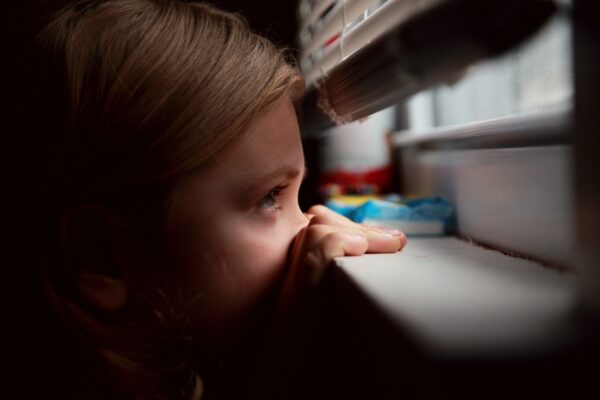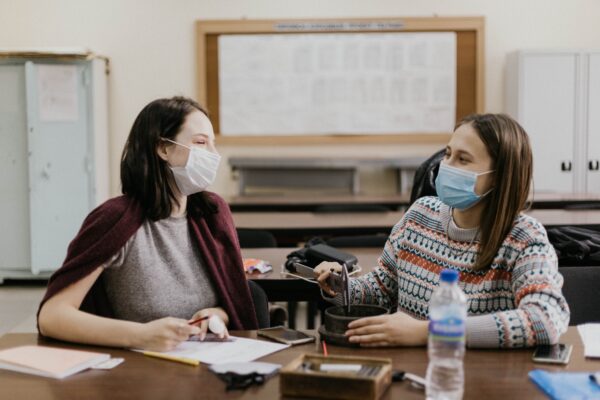There is no denying it. Education is changing due to Covid-19. And, to be honest, it needs to. We have been stuck in a rut for a long time, and much needed change is long overdue. This last year I feel like the veil was lifted, and the dark and ugly side of education was laid bare for all to see. We found out what we strived to achieve was all an illusion.

Equity? We did not have it. Some families had the support, the technology, and the safe and secure space to conduct school at home. Many, maybe most, did not. Do any of us believe that it made no difference before the pandemic?
Engagement? How many of us had the illusion that our content was truly engaging blown away when our Zoom meetings were lightly attended and our remote learners opted out of all of our innovative and personalized resources? If they opt out as soon as they are out of our reach, did we really have their attention?
Achievement? Did our grades and test scores measure the important metrics? What good have they been to us this year? Who still cares about standardized tests? Have we all figured out what we are actually teaching yet? (I’ll give you a hint: It’s not standards.)
As we move back to so-called normal, we need to remember that the old normal no longer exists. More than that, we have changed. We have come through a time of collective trauma, and we can only succeed if we create safe and supportive learning environments for students and teachers.
I am a trauma-informed educator. I grew up with trauma of my own, and I have made a study of trauma-informed teaching practices to better serve my students. I believe this has helped me reinvent my teaching practice this year in ways that supported students and created a safe and secure learning environment. I plan to do more.

I remember when I first learned GLAD (Guided Language Acquisition Design) strategies to better serve my English language learners in class. The selling point was that all students would benefit from them. The same must be said of trauma-informed teaching practices. They will make all students feel more supported, more safe, more able to learn and grow with us.
And, let’s face it; aren’t we all a little traumatized this year?
Students who have experienced trauma feel unsafe in most places, including school. They may have little control of their fear response due to trauma, and when they are under this stress they are less able to learn, to focus, or to regulate their emotions. They may be hyper alert or withdrawn. They may have disruptive behaviors. They may struggle socially, academically, emotionally, and even physically.
Here are some gems I collected from my recent research on trauma-informed classrooms:
- A 2014 study tells us that 45% of students have experienced some form of trauma. What do you think the numbers are now?
- All students learn best when they feel safe and supported.
- A safe, caring, and consistent adult is the best intervention for a child affected by trauma.
- Both students and teachers must feel psychologically safe in the classroom- no bullying, no judgment, no demeaning behaviors.
- The key to relationship-building is authentic interactions that respect student voice and perspectives.
- Trauma-informed discipline requires us to acknowledge the role of trauma in behavior and use appropriate consequences that promote healthier reactions in the future (think restorative justice practices).
- Self-regulation and mindfulness skills are as important as any curriculum.
- We can offset stressors with messages of empathy and optimism to support healing and resilience in our students.
I’d add to this list that we should do the following as we reinvent education:
- Create systems for evaluating student work that are more holistic and less demeaning and/or stress-inducing.
- Demand discipline systems that respect every child and offer support and encouragement over punishment.
- Encourage creativity, student choice, physical activity, and all other joyful pursuits.

There is an excellent article from the School-Justice Partnership: Trauma-Informed Classrooms. It is very long, but comprehensive.
If your time is limited, here is a short tip sheet from WestEd for Creating Trauma-Informed Learning Environments.
I would love to see more resources in the comments. I hope that educators all over the state will band together to support our students with new and improved practices- trauma-informed classrooms for all.
Thank you so much for highlighting the importance of trauma informed education, especially given this past year. You’re right, we are all a little (at least) traumatized and truly, why do we need standardized tests? They aren’t measuring what they should.
We are moving towards restorative practices next year, which I hope is going to bring us closer to discipline that is respectful and supportive, as you so eloquently point out.
Here are some additional resources used by my district:
The Impact of Secondary Trauma on Educators by Karen Baicker
Although many schools have implemented a trauma-informed approach to caring for students, the emotional distress that educators experience when working with traumatized students is widely overlooked.
Mindfulness: An Antidote to Classroom Anxiety by Jill Barbosa-Gonzales
Learn three strategies to create a calmer—and more mindful—classroom.
Seven Easy Steps to Personalized Mindfulness in Schools by Nick Mosca
Are your attempts to integrate mindful moments into your or your students’ days falling flat? Switch from a prescriptive to a personalized approach with these simple actions.